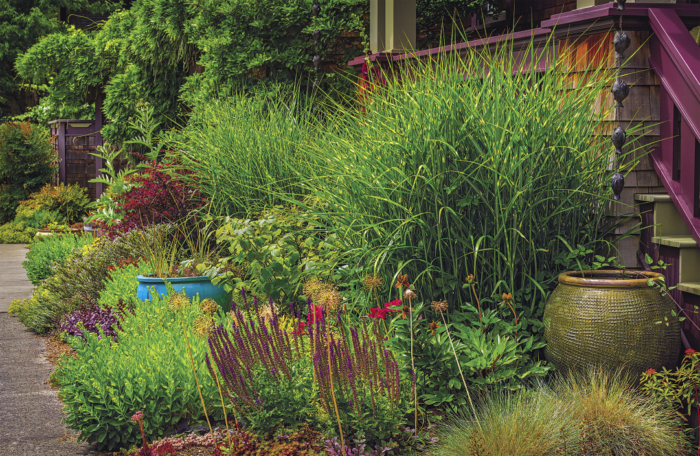
Normally, the best way to add balance to a design with a lot of small leaves and fine texture is to add big, bold, textured leaves. But Deborah Ellman’s garden is a clear example that there is another way. Her garden sits between her home and the street on a corner lot in Seattle, with a sidewalk running down the middle of it. Most of the plants have small or thin foliage, but Deborah makes sure her garden has impact through her use of color and form.
Containers Can Create Focal Points
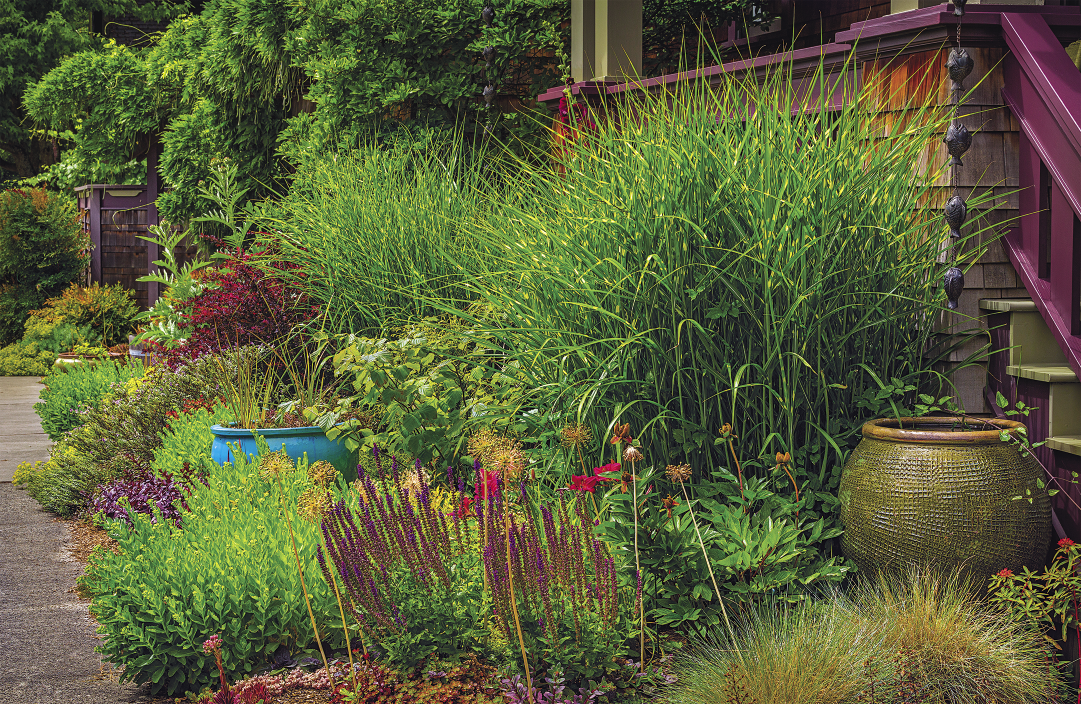
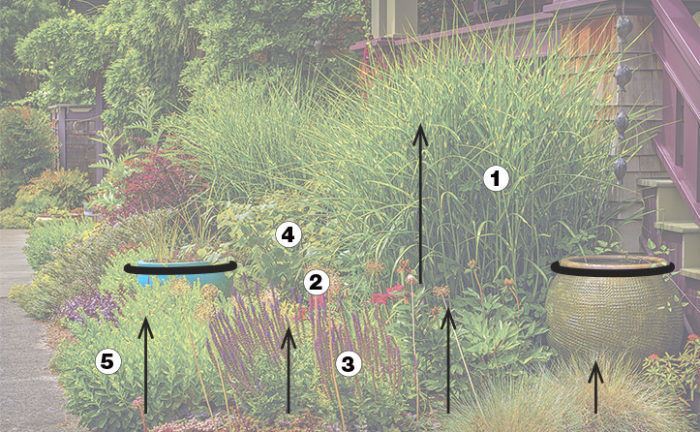
1. Zebra grass (Miscanthus sinensis* ‘Zebrinus’, USDA Hardiness Zones 4–9)
2. Star of Persia (Allium christophii, Zones 4–8)
3. ‘Caradonna’ sage (Salvia nemorosa ‘Caradonna’, Zones 5–9)
4. ‘Diane’ witch hazel (Hamamelis × intermedia ‘Diane’, Zones 5–9)
5. ‘Autumn Joy’ sedum (Sedum ‘Autumn Joy’, Zones 3–11)
Add an Unexpected Color
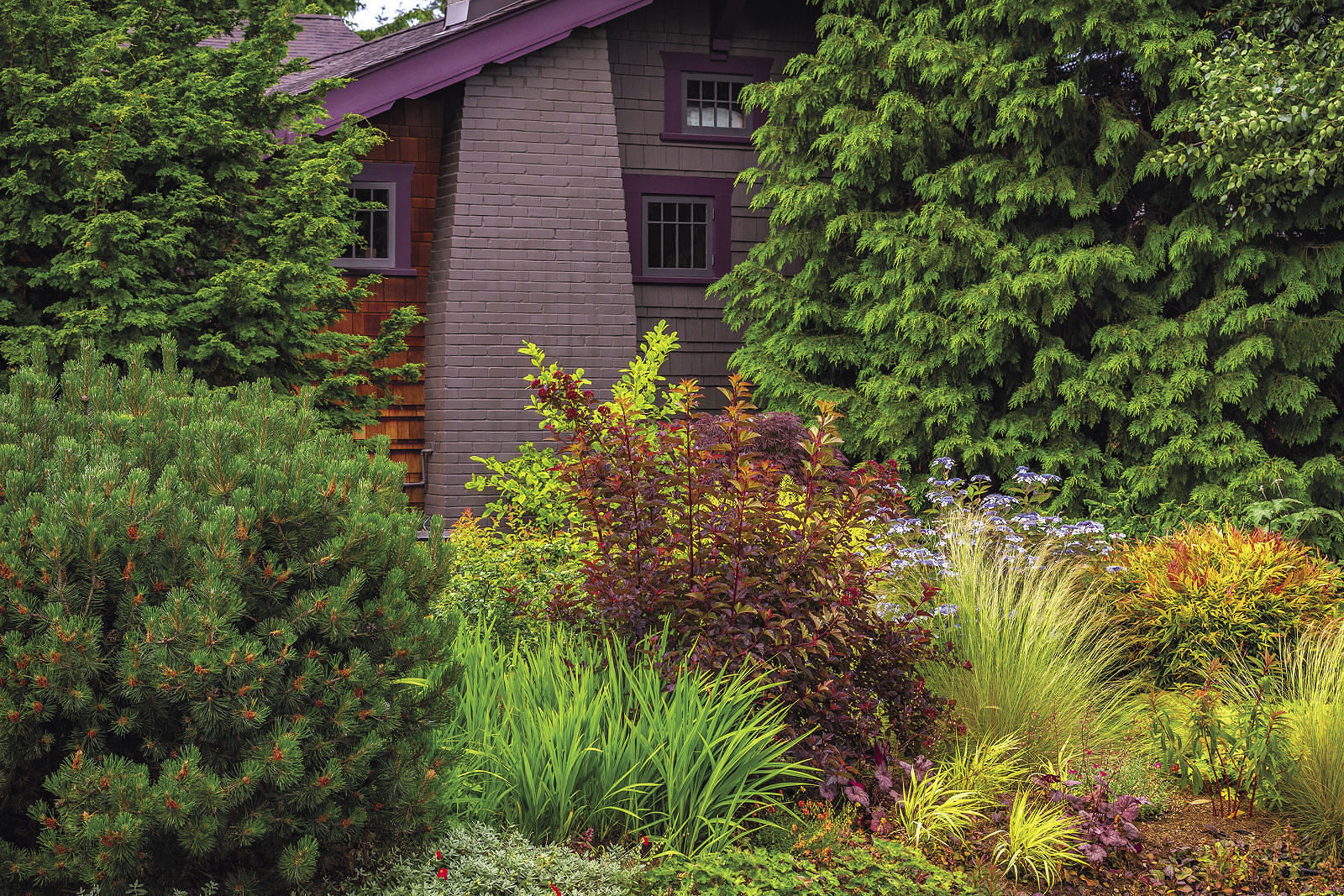
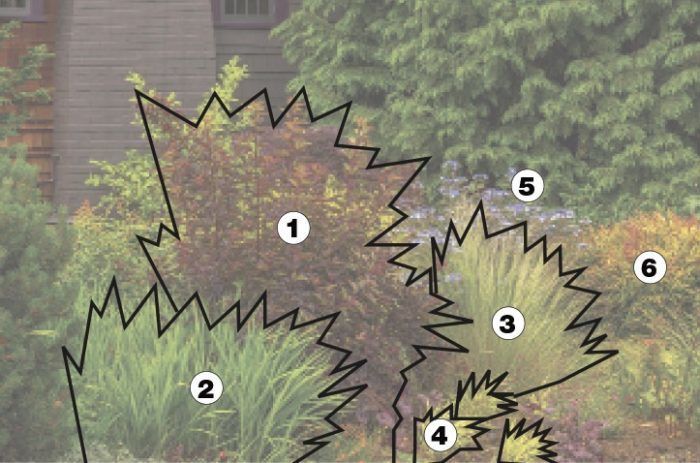
1. Coppertina® ninebark (Physocarpus opulifolius ‘Mindia’, Zones 3–8)
2. ‘Lucifer’ crocosmia (Crocosmia ‘Lucifer’, Zones 6–9)
3. Mexican feather grass (Nasella tenuissima, Zones 7–11)
4. ‘Aureola’ Japanese forest grass (Hakonechloa macra ‘Aureola’, Zones 5–9)
5. ‘Blue Wave’ bigleaf hydrangea (Hydrangea macrophylla ‘Blue Wave’ syn. ‘Mariesii Perfecta’, Zones 5–9)
6. ‘Gulf Stream’ heavenly bamboo (Nandina domestica* ‘Gulf Stream’, Zones 6–11)
Break Out of the Clouds
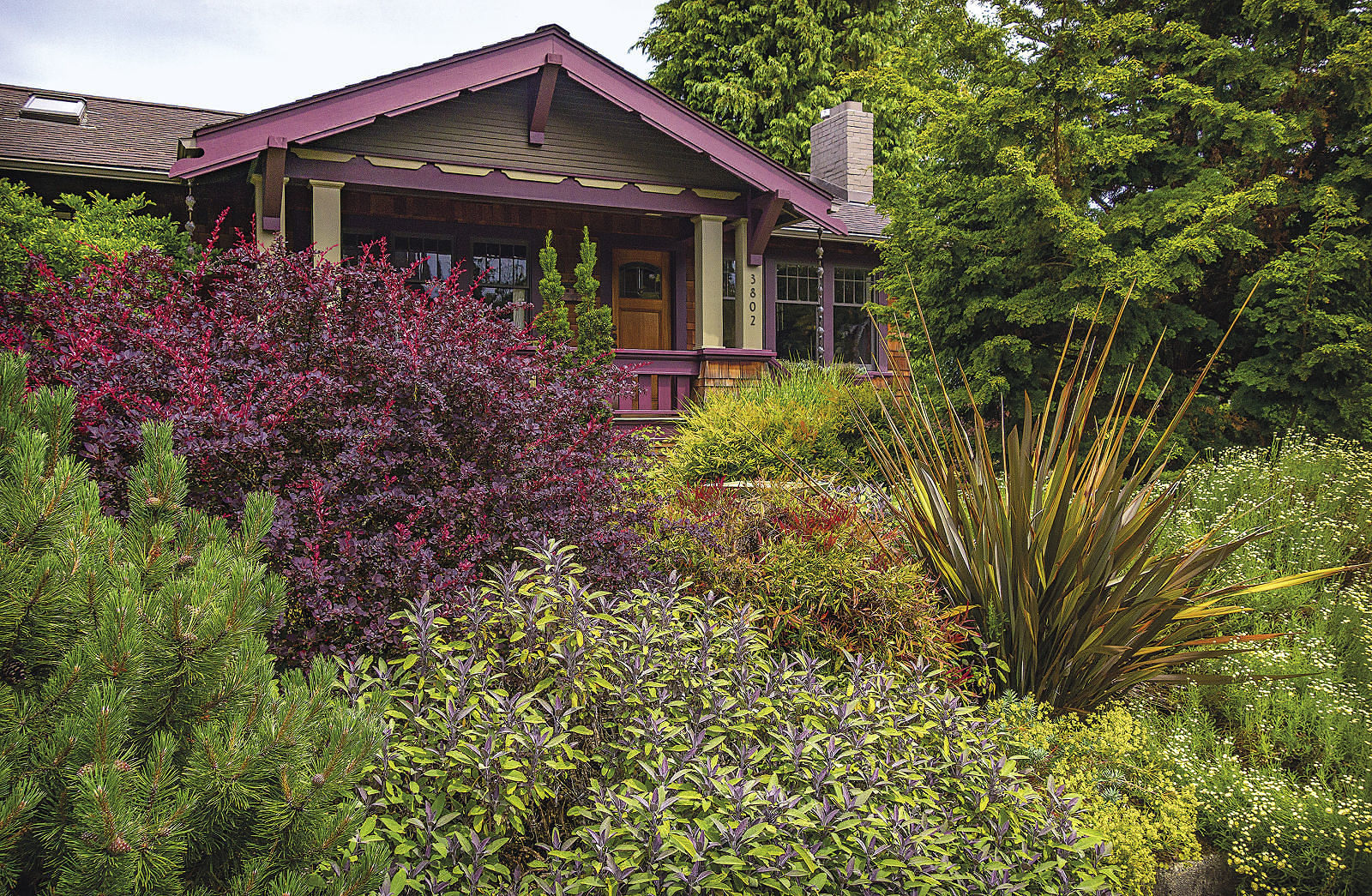
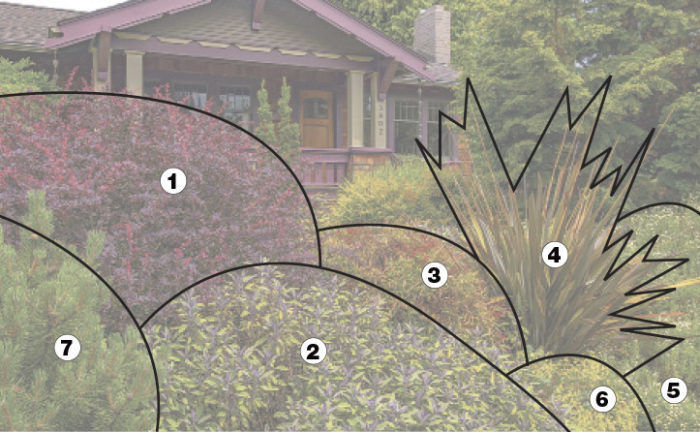
1. ‘Rose Glow’ barberry (Berberis thunbergii* ‘Rose Glow’, Zones 5–8)
2. Purple sage (Salvia officinalis ‘Purpurascens’, Zones 5–8)
3. ‘Gulf Stream’ heavenly bamboo (Nandina domestica* ‘Gulf Stream’, Zones 6–11)
4. New Zealand flax (Phormium cv., Zones 8–11)
5. Lavender cotton (Santolina pinnata, Zones 6–9)
6. ‘Blue Haze’ euphorbia (Euphorbia ‘Blue Haze’, Zones 7–9)
7. Mugo pine (Pinus mugo, Zones 2–9)
Repeat Shapes and Patterns
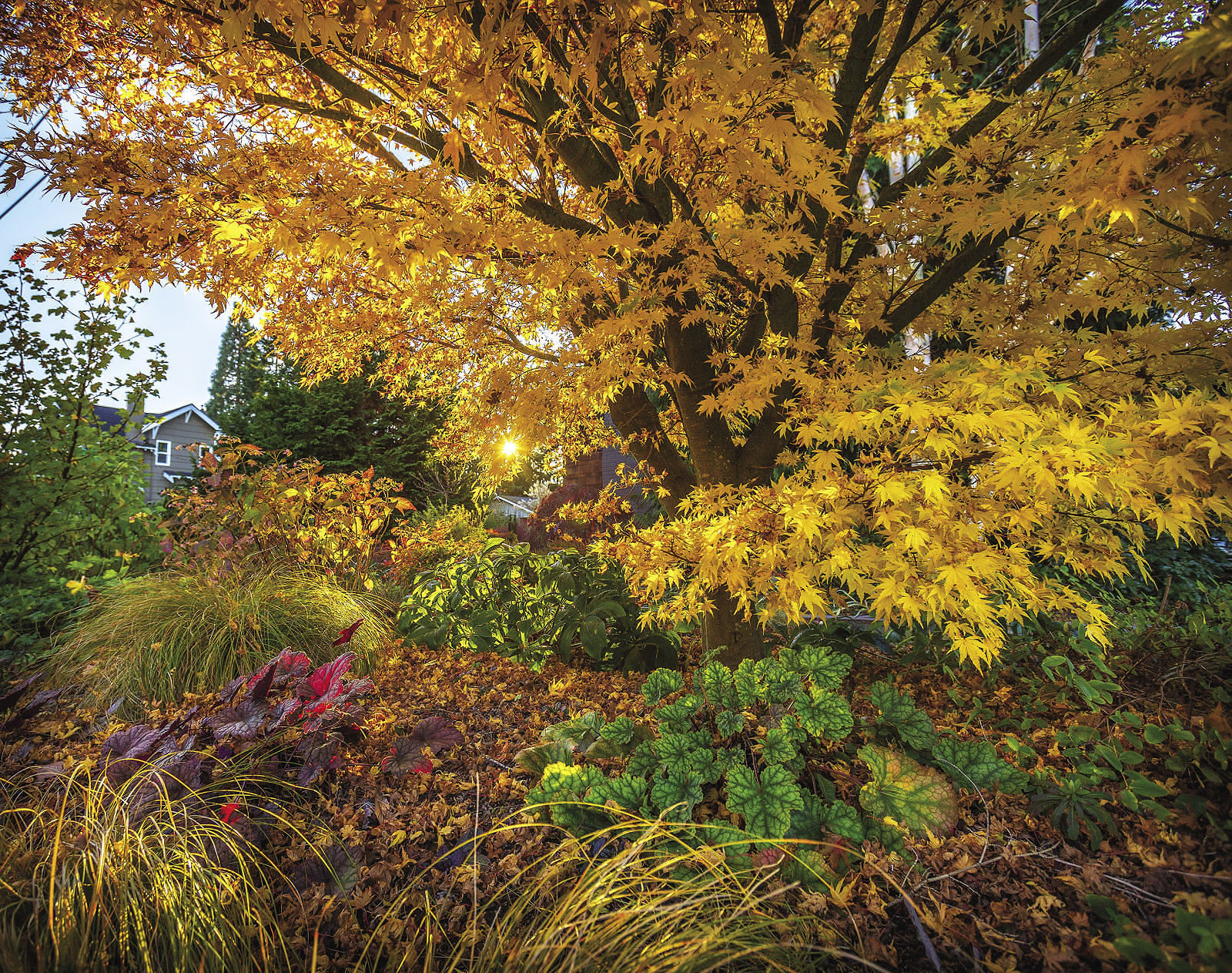
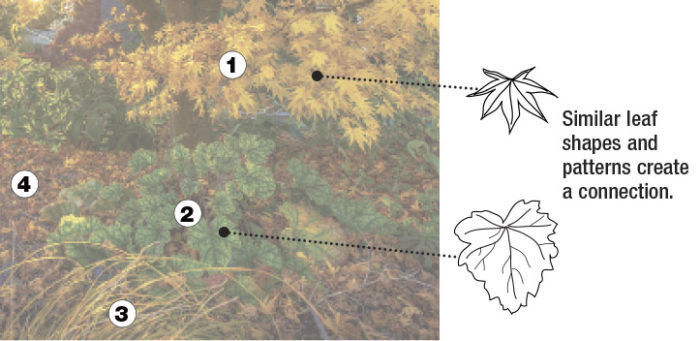
1. Coral bark Japanese maple (Acer palmatum ‘Sango-Kaku’, Zones 5–8)
2. ‘Green Spice’ heuchera (Heuchera ‘Green Spice’, Zones 4–9)
3. Frosted curls sedge (Carex albula, Zones 6–9)
4. ‘Amethyst Myst’ heuchera (Heuchera ‘Amethyst Myst’, Zones 4–9)
Design
Match the House to the Garden
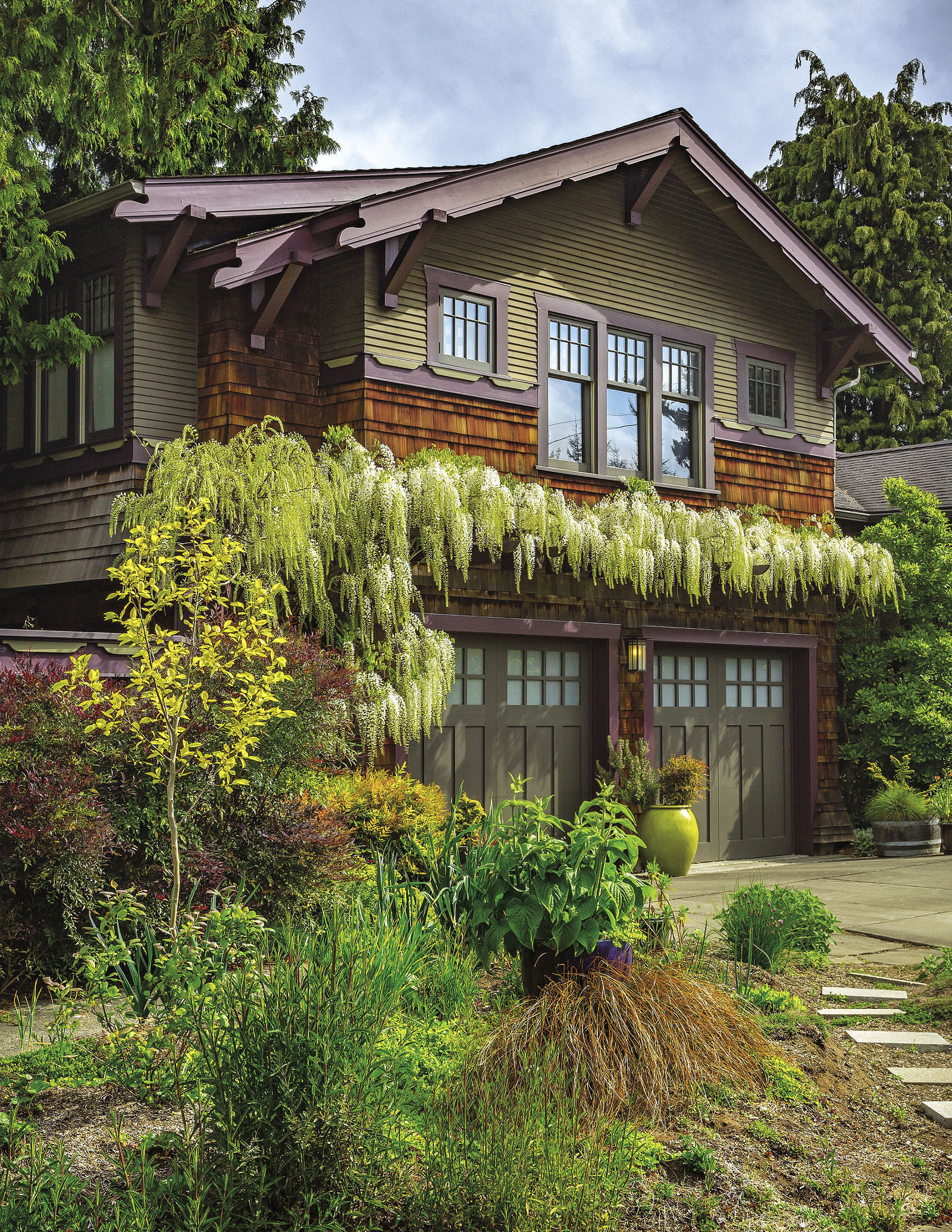
Wait. Isn’t that backward? Not in this garden. Of course, the house and garden should work together. Normally, gardeners pick up color cues from the house and choose plants accordingly. But Deborah already had a color scheme that she loved for her garden. When it was time for a house remodel, she took cues from her plants for the home’s exterior colors. The wine/plum/deep burgundy trim color (which even Deborah can’t put a name to) harmonizes with foliage and flower colors around it.
Steve Aitken is the editor.
Photos: David E. Perry


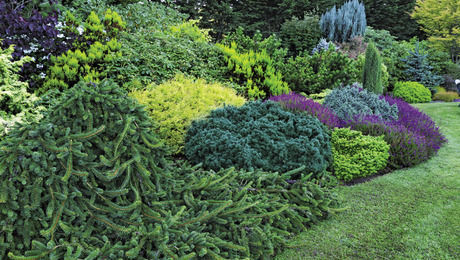


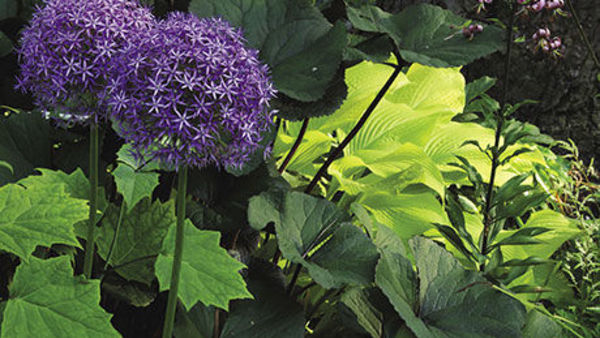
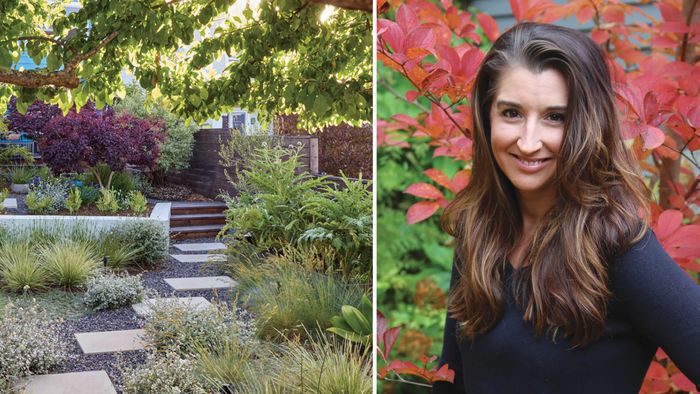
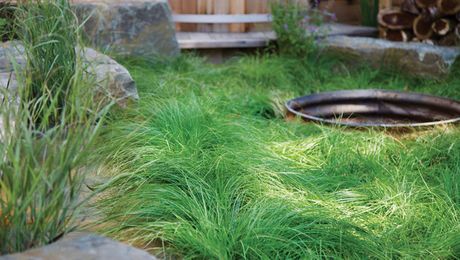
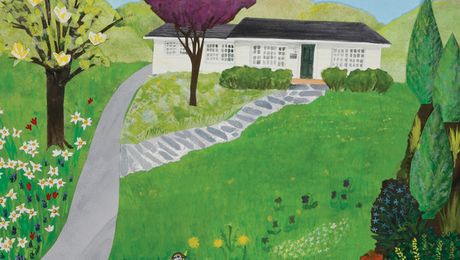


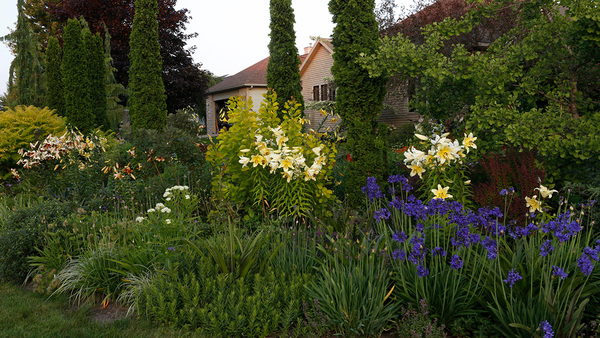



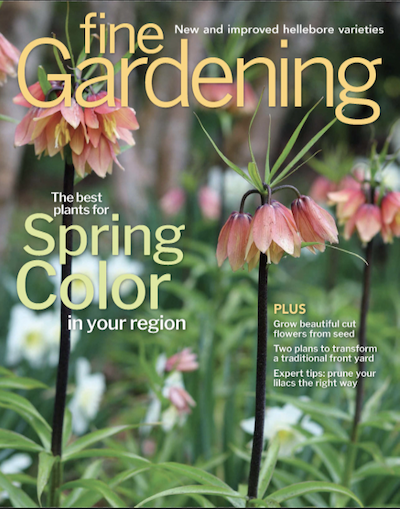



Comments
Log in or create an account to post a comment.
Sign up Log in